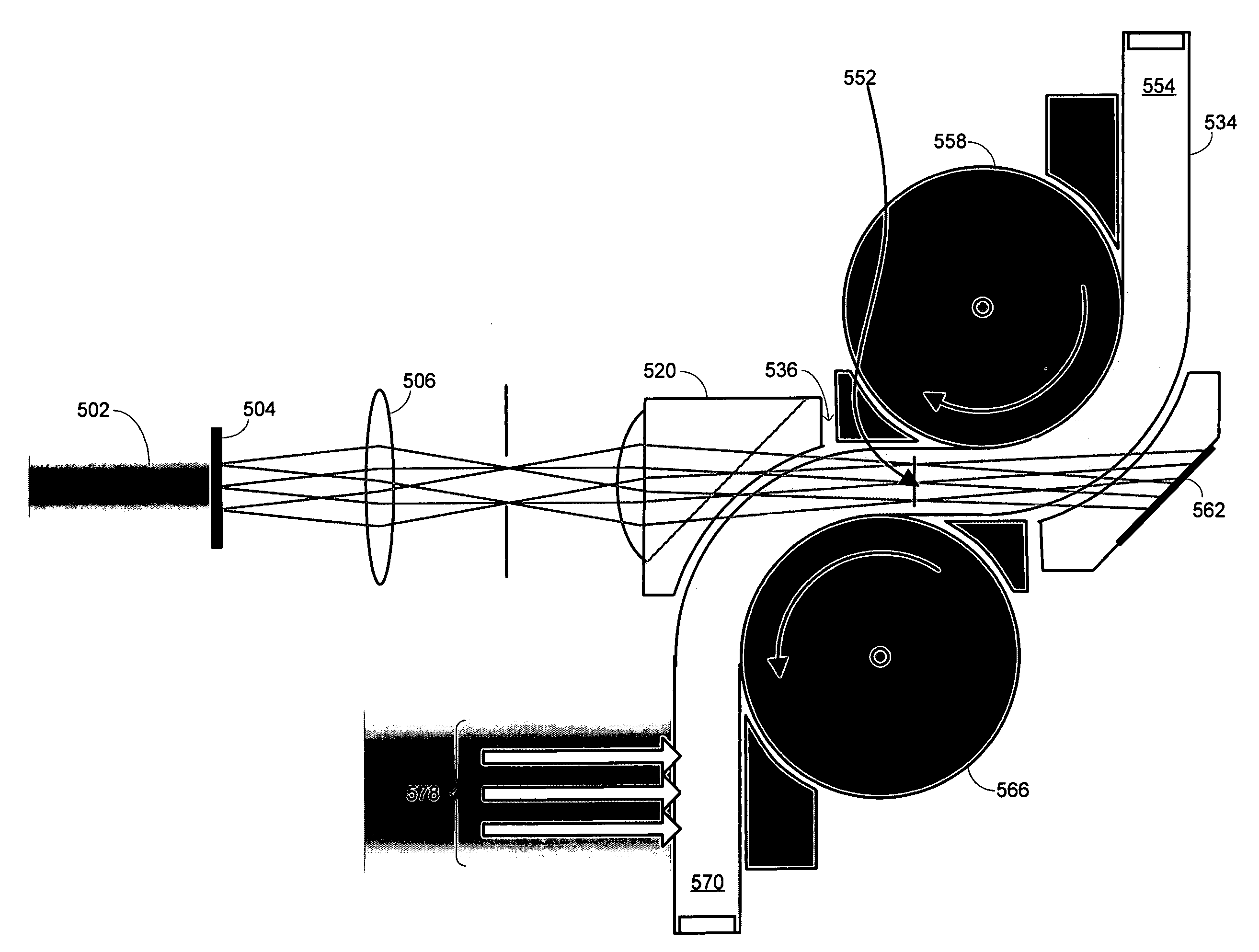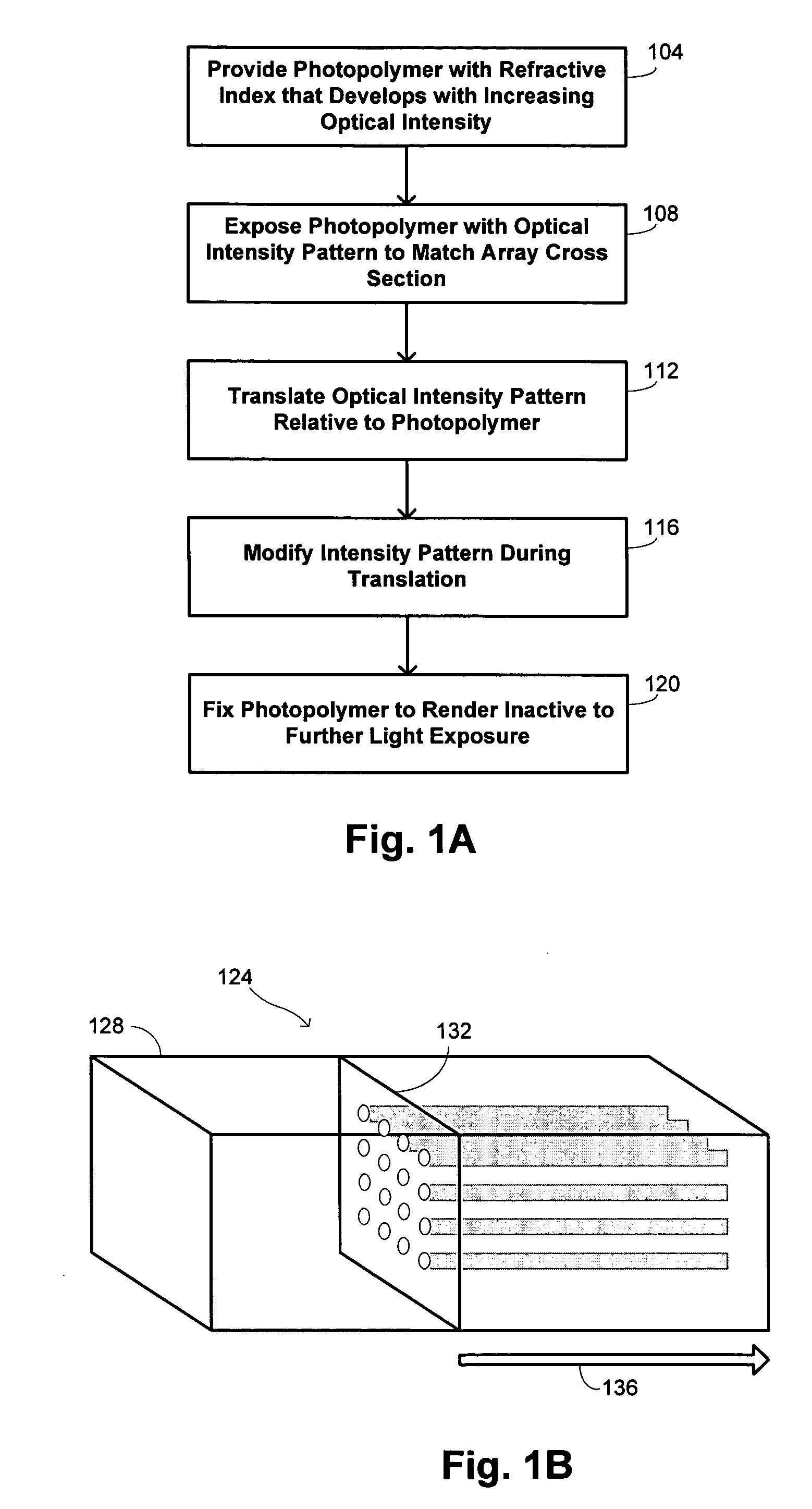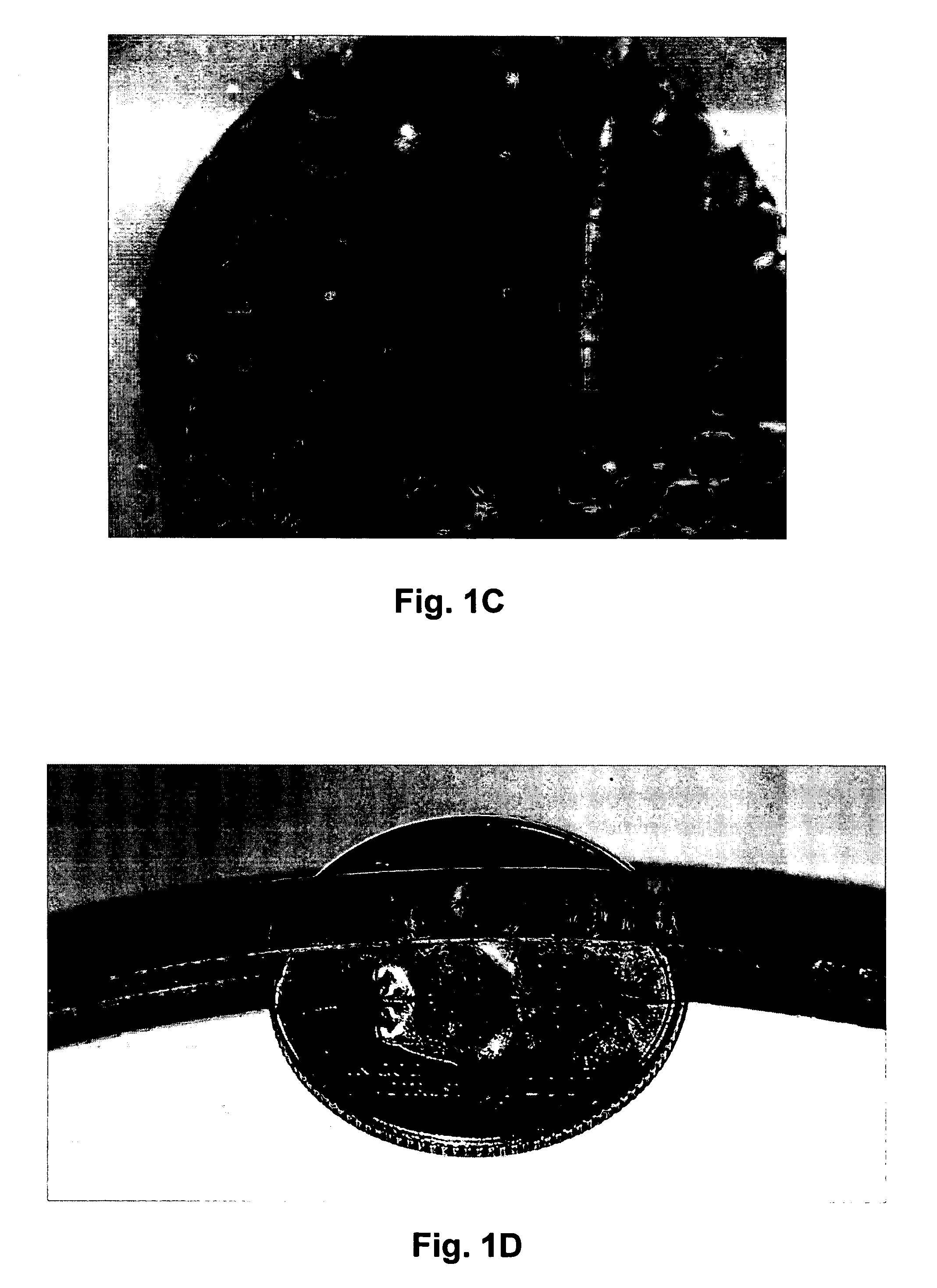Monolithic waveguide arrays
a monolithic waveguide and array technology, applied in the field of dielectric waveguides, can solve the problems of preventing the bundle from being bundled, the fibers within the bundle cannot be stacked regularly, and the flexibility of the fiber-bundle endoscope structure remains significant,
- Summary
- Abstract
- Description
- Claims
- Application Information
AI Technical Summary
Benefits of technology
Problems solved by technology
Method used
Image
Examples
Embodiment Construction
1. Overview
[0030]Embodiments of the invention provide monolithic waveguide arrays that may be used in a wide array of applications, including endoscopic and other applications, as well as methods for fabricating such monolithic waveguide arrays. The monolithic waveguide arrays may comprise a plurality of waveguides formed from a photoreactive material that changes its refractive index in response to exposure to light of an appropriate wavelength. In certain embodiments, the photoreactive material comprises a photopolymeric material. Specific details of the process are sometimes described below with specific reference to such photopolymeric materials without intended to depart from the more general aspects of the invention.
[0031]The photoreactive properties of the material are exploited by creating an optical intensity pattern corresponding to the desired array for the waveguides. This optical intensity pattern is then translated relative to the photoreactive material to cause the de...
PUM
| Property | Measurement | Unit |
|---|---|---|
| wavelength | aaaaa | aaaaa |
| wavelength | aaaaa | aaaaa |
| length | aaaaa | aaaaa |
Abstract
Description
Claims
Application Information
 Login to View More
Login to View More - R&D
- Intellectual Property
- Life Sciences
- Materials
- Tech Scout
- Unparalleled Data Quality
- Higher Quality Content
- 60% Fewer Hallucinations
Browse by: Latest US Patents, China's latest patents, Technical Efficacy Thesaurus, Application Domain, Technology Topic, Popular Technical Reports.
© 2025 PatSnap. All rights reserved.Legal|Privacy policy|Modern Slavery Act Transparency Statement|Sitemap|About US| Contact US: help@patsnap.com



